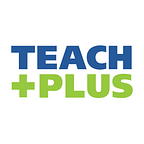In Our Classrooms, Language Matters
By Scoie Green
The teachers’ lounge is witness to all sorts of conversations. Normally, they’re easy to let go, but this one, I will never forget. Susan, a White teacher, said to me, “This kid is a thug! All he does is hang around hoodlums. He and three other Black boys do nothing but cause trouble.” I sat in silence trying to figure out how a teacher could use such harsh words to label a student. Then, I asked, “What does a thug look like to you? Why did you choose the word “hoodlum”? Why was it important that you point out these boys are Black?”
Susan stared at me in shock. Her face began to turn red as she said, “Scoie, I am the least racist person you’ll ever meet. People are just too sensitive when it comes to race.”
Language matters. Racist and divisive rhetoric subconsciously speaks to the history of racial slavery and racism in our country. This means catching oneself before using terms such as “thugs and hoodlums,” which are laden with bias associated with certain groups of people.
I don’t blame Susan, who refused to admit or understand the power of her words. She hasn’t been given the proper tools to manage a racially sensitive conversation and this lack of training in teacher education preparation programs and in-school professional development is perpetuating attitudes like hers. Educator and anti-racism activist Jane Elliot said, “Teachers can’t teach what they haven’t been taught.”
Everybody needs training, and cultural and linguistic training at the district level is essential. Teachers should be provided an opportunity to deepen their self-awareness in order to understand identity and how the sense of self is shaped for our students. We need to analyze our own understanding of what it means to be outside the groups one identifies with, and how this impacts students who are not part of these identity groups.
The first step in such training is to self-reflect. For instance, why did I view Susan’s terms or labels as offensive? What were my thoughts as she spoke? Did I see her as a racist or just somebody who lacked the necessary language to express her frustration at students of another race? Susan’s self-reflection would begin with asking why her African American colleague would view her terms as offensive. Do my statements make me a racist? When I say “sensitive,” am I saying that people should just get over it and not respond to my comments? The goal of this exercise is to create a safe space without judgment.
The next layer of the training involves acknowledging one’s own racial biases. Teachers would be provided the opportunity to own that White dominance and privilege in American society still exist and to recognize that White supremacy and implicit bias are part of certain behaviors. This is important because our actions as educators are seen and felt by the students. Teachers would spend time exploring one’s own role in oppression, and how we are all advantaged and disadvantaged in various ways. Without acknowledgement, self-reflection serves no real purpose.
Another important aspect of this training is to address the level of fear and discomfort when communicating with students of color, particularly Black boys. Cultural competence is the ability to interact effectively with students of cross-cultural identity. It is about seeing the Black student not as “angry,” “at risk,” or a “troublemaker,” but as a student who speaks through a history of pain. The teachers in this group would share strategies for responding to situations that support and promote positive student identity development.
Now that one has self-reflected, acknowledged individual biases, and discussed fear or discomfort when communicating with certain groups of students, it is time to discuss methods of dismantling these behaviors and ideology in the classroom. The goal is for us to leave the training with a few action steps. One step would be to understand how racism functions in our classrooms. Incorporating books, visuals, and other materials that reflect Black history, lives, and points of view can affirm the Black student’s experiences. Another course of action could be to explore the meaning and importance of being an ally. Teachers need to understand how one can use any privilege within the area of influence to advocate on behalf of students. Shifts of anti-racism don’t happen overnight, or after one professional development session. As educators, we must all commit to continuous learning efforts outside of any formal training. That includes additional conversations on race, reviewing literature to identify and alleviate racist thoughts, and watching films and documentaries that discuss the reality of American society through storytelling.
For my part, I explained to Susan that I wanted her to see things from my perspective and we have had a few conversations since. Although talking about race can be uncomfortable, it doesn’t mean we should discontinue the conversation.
Scoie Green teaches 10–12th grade Professional Communications at Obra D. Tompkins High School, in Katy, Texas. She is a 2020–21 Teach Plus Texas Policy Fellow.
